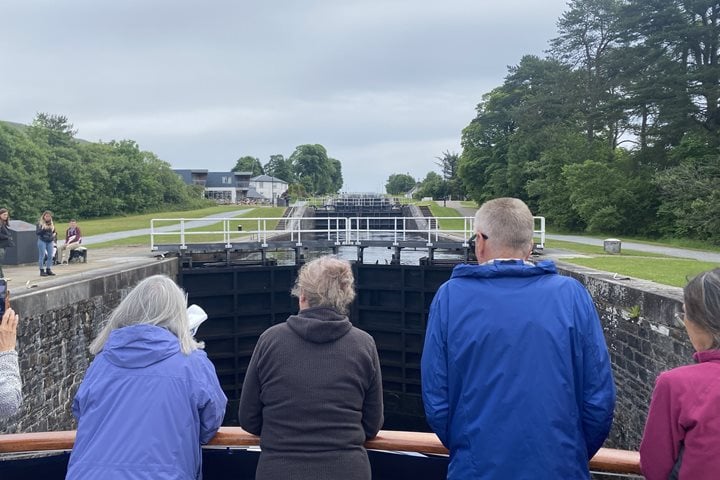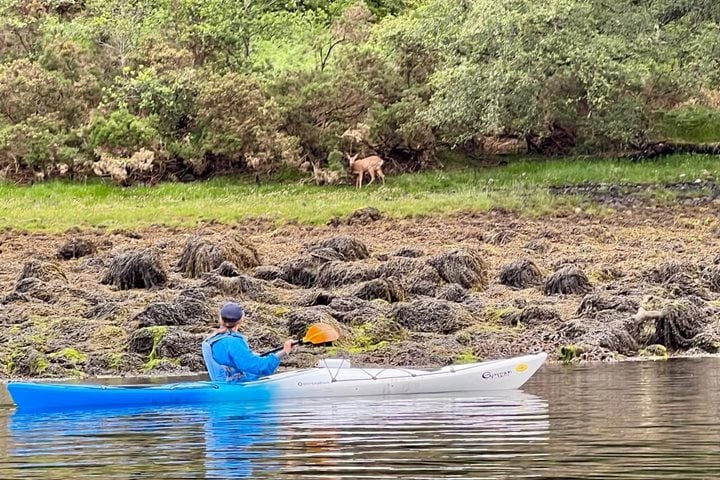This morning we awoke on the Isle of Mull. We set out early via coach. We took a lovely drive through the amazing vistas of Mull. Striking mountainsides of green, sheep, and ocean views filled our panoramas. We headed to one of the most beautiful, important, and tiny islands of Scotland: the isle of Iona. With a population of only 120, this place is known as the birthplace of Christianity in Scotland. We took the ferry across the narrow canal from Mull and walked onto this enchanted isle. It was the year 563 when Saint Columba left Ireland and visited these same shores. He started to spread the gospel and convert the Picts to Christianity. Our local guide, Jana, led us through the ruins of a 13th-century nunnery, past a cemetery, and finally to the medieval Abbey of Iona. Our guests had the chance to walk through the halls and church of this centuries-old abbey; it has an energy that can be felt. Looking out to the sea from the shores we felt the peacefulness — as probably generations of others have felt looking out the same view over the years.
After having lunch on Iona, we crossed back on the ferry. Our next destination was Duart Castle. Positioned near the entrance to Loch Linnhe, this fortress on the hillside has been looking over the seas since the 14th century. Originally the seat of Clan MacLean, the castle was taken over during the Jacobite uprising and fell into ruins. It is now back in the caring hands of the MacLean clan, and we delighted in the opportunity to experience the history that lives within the castle’s walls.
It was a short trip from there to return to Lord of the Glens. We set sail from the Sound of Mull and arrived in the late evening at the port of Oban — a bustling city in comparison to the villages we have been visiting. Guests had the option to dine in town or on the ship. We enjoyed the sunset over Oban that evening. It was a long day, but one that will stay with us long after we leave the beautiful Highlands of Scotland.







